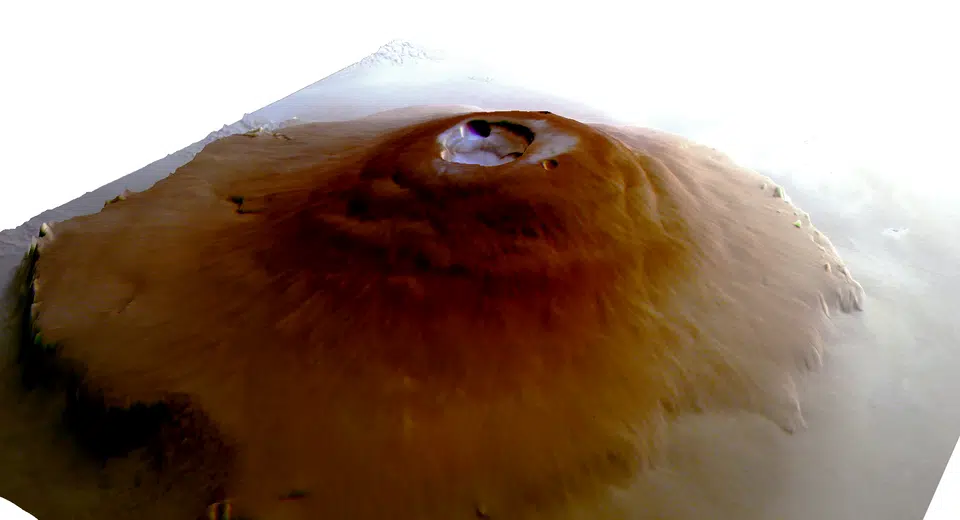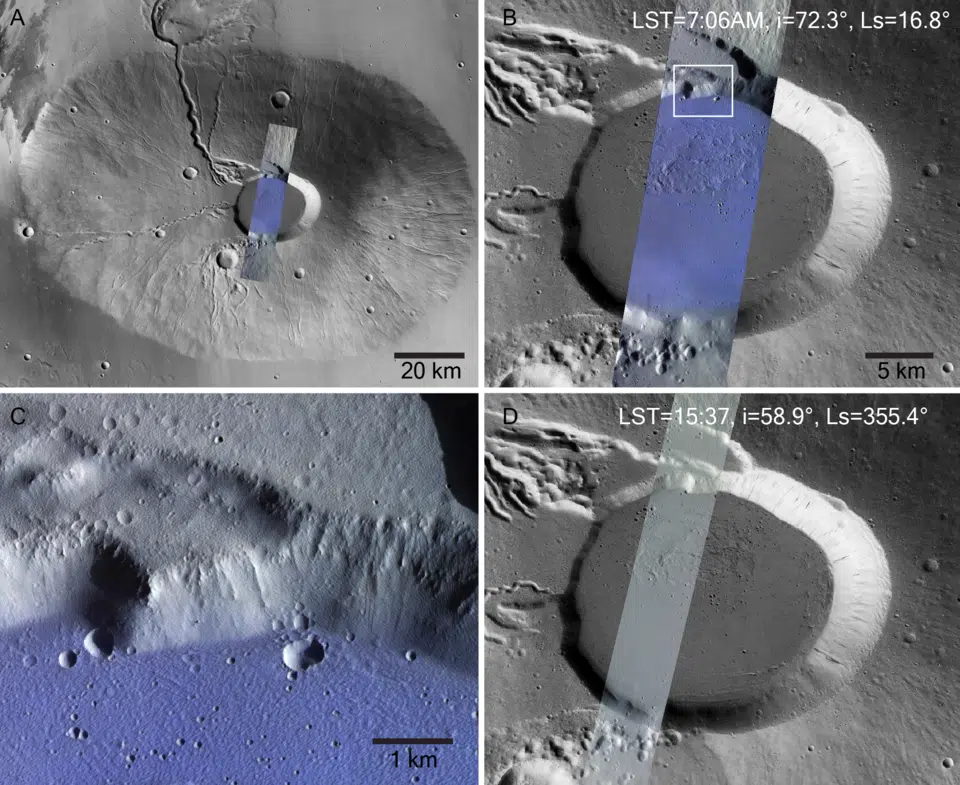New Mars images reveal something that has never be seen before on the Red Planet
- Scientists have found frost on volcanoes near Mars’s equator
- It was previously believed that water frost could not form in that area
- The ‘astonishing’ discovery has changed how scientist think about the planet
Published on Jun 12, 2024 at 11:08 AM (UTC+4)
by Claire Reid
Last updated on Jun 13, 2024 at 6:26 PM (UTC+4)
Edited by
Tom Wood
Morning frost has been spotted on volcanoes on Mars in an area where it was previously thought impossible for water frost to exist.
The frost was seen on the Tharsis volcanoes – the tallest volcanoes in our solar system – which are situated near the planet’s equator.
Until now, experts believed that frost was not able to form in that area – meaning the new discovery has changed what scientists thought they knew about the Red Planet.
READ MORE! The first rover to land on Mars captured revealing picture of its surface
‘We thought it was impossible.’
The patches of frost are present for a few hours around sunrise before they evaporate in sunlight.
The amount of frost represents about 150,000 tons of water swapping between surface and atmosphere each day during the cold seasons, the equivalent of roughly 60 Olympic swimming pools.

The frost was first discovered by the European Space Agency’s (ESA) ExoMars Trace Gas Orbiter (TGO), and then again by another instrument aboard TGO and ESA’s Mars Express.
Lead author Adomas Valantinas – who made the discovery as a PhD student at the University of Bern, Switzerland, and is now a postdoctoral researcher at Brown University in the US – said in a press release: “We thought it was impossible for frost to form around Mars’s equator, as the mix of sunshine and thin atmosphere keeps temperatures relatively high at both surface and mountaintop – unlike what we see on Earth, where you might expect to see frosty peaks.
“Its existence here is exciting, and hints that there are exceptional processes at play that are allowing frost to form.”
What the discovery means for Mars
The discovery confirms that ice doesn’t only form at the planet’s poles and is a strong indication that water ice is more abundant than experts previously thought.

Doctor Minjae Kim, research fellow, Department of Physics, University of Warwick, told the PA news agency: “ESA’s ExoMars and Mars Express missions have now made an astonishing detection – spotting water frost for the first time near the planet’s equator, a region where its existence was previously thought impossible.
“This finding confirms that ice is not solely confined to the Martian poles.
“It indicates that water ice had been, and still is, far more abundant across the planet than previously realized.”
Colin Wilson, ESA project scientist for both TGO and Mars Express added: “Finding water on the surface of Mars is always exciting, both for scientific interest and for its implications for human and robotic exploration.”
NASA has previously shared that ancient Mars wasn’t just wet – it actually experienced momentous floods.
Its car-sized rover, Perseverance snapped images showing huge boulders blanketing part of the Jezero Crater – a dried-up river delta.
Something the space agency said was likely due to ‘strong flood waters billions of years ago’.

Claire Reid
Claire Reid is a journalist who hails from the UK but is now living in New Zealand. She began her career after graduating with a degree in Journalism from Liverpool John Moore’s University and has more than a decade of experience, writing for both local newspapers and national news sites. Across her career she's covered a wide variety of topics, including celebrity, cryptocurrency, politics, true crime and just about everything in between.




